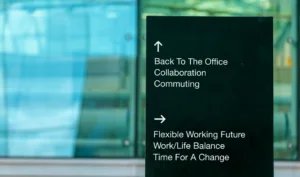
Which Pandemic-Era People Strategies Are Worth Preserving?
Organizations are always changing. This has been especially important since the pandemic arrived in 2020. At first, HR and business leaders were flying blind, reacting

Organizations are always changing. This has been especially important since the pandemic arrived in 2020. At first, HR and business leaders were flying blind, reacting

If you follow tech industry news, you’re no doubt aware of ongoing layoffs at Google. Early this year, a New York Times reporter asked me

We publish a lot of articles at TalentCulture by terrific HR practitioners, innovators, and thought leaders. In fact, we’ve been sharing useful ideas from diverse

As 2024 begins, employers are eager to move beyond “The Great Resignation” of 2022 and last year’s subsequent “Great Gloom.” But what exactly are organizations

The pandemic was a powerful force that profoundly changed the nature of work. When lockdowns eventually lifted and organizations welcomed people back to the office,

Recently, one of the soldiers in my reserve unit decided it was time to hang up the uniform and transition to the civilian world. During

The Problem With Grind Culture In recent years, “hustle” and “grind” culture have become equated with drive, ambition, and success. The logic is that if

We often hear that people don’t leave jobs, they leave managers. We all get what that means. But what does it mean for those of

Leaders, do workforce engagement issues keep you up at night? If not, here’s a powerful wake-up call from Gallup. Last year, the global employee engagement

Long before the pandemic, many organizations struggled with employee engagement. But now, it’s an even tougher hill to climb. Hybrid and remote work have become

For more than two years, employees have slowly — and sometimes reluctantly — returned to their workplaces. Leaders have been trying to instill a sense

For most of the last three years, millions of people clocked in at work from the comfort of home. Now, eager to return to a

Over the last three years, flexible and agile work models have been at the forefront of workplace disruption. Emboldened by work-from-home standards enforced during the

The pandemic has sparked a global conversation about whether people who’ve been working from home should be free to choose their preferred work location. It’s

Running a business from home can be an exhilarating and highly rewarding experience. But remote business owners know that leading from a home office also

The pandemic changed how we live and work in so many ways — not the least of which was the daily commute. But now, after

We don’t need research to tell us the future of work will be much different from pre-pandemic norms. But Covid isn’t the cause. Disruption was

Predicting the unexpected is a tricky process — especially in the world of digital innovation, where change and disruption are a way of life. But

As 2022 comes to a close, several work trends are clearly visible on the horizon. Here’s one employers can’t afford to ignore — an alarming

What benefits are top-of-mind for organizations that want to attract and retain great talent in today’s challenging talent market? Many are finding it pays to

It’s not a stretch to say COVID changed everything—including the way working families think about childcare benefits. Before the pandemic, parents struggled with childcare challenges,

These days, we’re flooded with headlines about The Great Resignation, The Big Quit, and The Great Reshuffle. It’s not surprising. The desire for career advancement

Trust plays a role not just in employee recruitment and retention, but in everything from the benefits employers offer to their cultural norms. As leaders